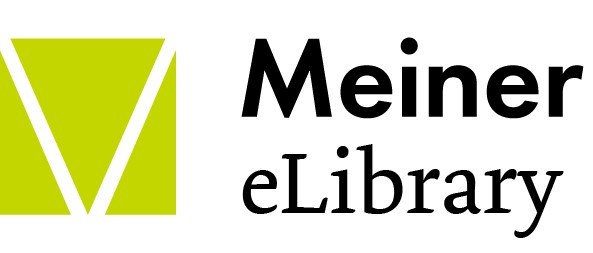Der Begriff des »Zombie Formalismus« beschreibt eine Form der Kunst, welche die Intention verfolgt, die Bedürfnisse des Marktes zu erfüllen. Gegenwärtige Entwicklungen des Kunstmarkts fordern die institutionelle Theorie von Kunst heraus, da es zunehmend fraglich erscheint, dass ›die Kunstwelt‹ – das Kernstück der institutionellen Theorie – noch von einem tiefgehenden Kunstverständnis anstatt von ökonomischen Interessen geleitet wird. Da die institutionelle Theorie ›die Kunstwelt‹ an sich sehr vage definiert, könnte diese auch wirtschaftlich orientierte Sammlerinnen und Galeristen einschließen. Wenn der monetäre Wert von Kunst aber die treibende Kraft für die Erschaffung von Kunst ist, stellt sich die Frage, wie dies die Kunstwelt als Institution, die darüber entscheidet, ob etwas als Kunst gelten kann, beeinflusst. Um diese Frage zu beantworten, werde ich mich mit neuesten Entwicklungen der zeitgenössischen Kunstwelt auseinandersetzen, da diese es erfordern, die institutionelle Theorie so zu modifizieren, dass sie auf gegenwärtige Phänomene anwendbar ist. Als Ausblick werde ich vorschlagen, dass David Humes allgemeiner Maßstab für das Geschmacksurteil zur Entwicklung eines Maßstabs für das kuratorische Urteil beitragen könnte. Möglicherweise könnte dieser kuratorische Maßstab dazu dienen, dass Kuratorinnen als unabhängige Gatekeeper fungieren.
Zombie formalism describes a type of art designed specifically to cater to the demands of the market. I argue that recent developments on the art market challenge the institutional theory of art since it appears increasingly questionable whether the artworld–the centerpiece of the institutional theory–is guided by a deep understanding of art rather than economic considerations. Given that the institutional theory remains rather vague about the very definition of ›the art- world‹, the artworld may also comprise investment-minded mega-collectors and art dealers. If, however, money becomes the driving force for the creation and exhibition of art, how does this impact on the artworld as institution that decides about whether or not something may count as an artwork? Can the institutional theory of art survive zombie formalism? In order to answer these questions, I will map out recent developments in the artworld that might force us to amend the institutional theory to be applicable also to contemporary phenomena. My summary of the main approaches to institutional theory will reveal that none of them has yet succeeded in providing persuasive account of the nature of the artworld. I will suggest as an outlook that we need to critically interrogate David Hume’s standard of taste in order to work towards a curatorial standard of taste.
- | Kapitel kaufen CoverU1
- | Kapitel kaufen Inhaltsverzeichnis3
- | Kapitel kaufen ABSTRACTS5
- | Kapitel kaufen Carsten Dutt: Das leere Grab – mit fremdem Leben erfüllt. Allusion und Reflexion in Jeff Walls Fotoarbeit The Flooded Grave5
- | Kapitel kaufen Claudia Benthien und Julia Catherine Berger: Vanitas-Stillleben in der Videokunst – Aktuelle Perspektiven eines barocken Motivs und ihreGestaltung von Zeitlichkeit5
- | Kapitel kaufen Carolin Rocks: Ästhetisches ethos – Praxeologie, Foucaults ethische Praktiken und die Literaturwissenschaften6
- | Kapitel kaufen Sarah Hegenbart: Can the institutional theory of art survive zombie formalism?7
- | Kapitel kaufen Burkhard Liebsch: Gewalt, Ordnung und außerordentliche Erfahrung. Zur Beschreibung der Diskussionslage – in pathisch-ästhetischer Perspektive8
- | Kapitel kaufen Kim Sher: The End of Art Revised – The video-footage from the Museum of Mosul as an ›end‹ of the theory9
- | Kapitel kaufen Michael Wedel: Zeitgenosse Murnau – Eine verpasste Begegnung mit der »Gesellschaft für Ästhetik und Allgemeine Kunstwissenschaft«10
- | Kapitel kaufen Angela Rapp: Was ein Ding zum Museumsding macht – und was es über unser Sehen verrät10
- | Kapitel kaufen ABHANDLUNGEN13
- | Kapitel kaufen Das leere Grab – mit fremdem Leben erfüllt. Allusion und Reflexion in Jeff Walls Fotoarbeit The Flooded Grave. Von Carsten Dutt13
- | Kapitel kaufen Vanitas-Stillleben in der Videokunst – Aktuelle Perspektiven eines barocken Motivs und ihre Gestaltung von Zeitlichkeit. Von Claudia Benthien und Julia Catherine Berger39
- | Kapitel kaufen Das Stille zum Leben erweckt: von Suggestion zu Fragmentierung43
- | Kapitel kaufen Im Zeitraffer: medial beschleunigter Verfall49
- | Kapitel kaufen Im Loop: Der ewige Kreislauf von Werden und Vergehen56
- | Kapitel kaufen Anmutungen von Echtzeit: Vanitas im Prozess60
- | Kapitel kaufen Ästhetisches ethos – Praxeologie, Foucaults ethische Praktiken und dieLiteraturwissenschaften. Von Carolin Rocks69
- | Kapitel kaufen I. Einführung69
- | Kapitel kaufen II. Praxeologie71
- | Kapitel kaufen A. Praktiken in der germanistischen Literaturwissenschaft71
- | Kapitel kaufen B. Praktiken in der Sozialtheorie79
- | Kapitel kaufen III. Praktiken des Selbst als ästhetisches ›ethos‹83
- | Kapitel kaufen A. Foucaults doppelter Praktiken-Begriff83
- | Kapitel kaufen B. Die ästhetische Form der Praktiken des Selbst90
- | Kapitel kaufen C. Tugendübungen. Das ethos der Literatur94
- | Kapitel kaufen Can the Institutional Theory of Art survive Zombie Formalism? By Sarah Hegenbart97
- | Kapitel kaufen I. Zombie formalism and other recent developments in contemporary arts98
- | Kapitel kaufen II. The ›artworld‹ as core of INST100
- | Kapitel kaufen III. The artworld phenomenon Damian Hirst and the hubris of global art markets102
- | Kapitel kaufen IV. Outlook: Working towards a curatorial standard of taste104
- | Kapitel kaufen Gewalt, Ordnung und außerordentliche Erfahrung. Zur Beschreibung der Diskussionslage –in pathisch-ästhetischer Perspektive. Von Burkhard Liebsch107
- | Kapitel kaufen I. Zum Verhältnis von Gewalt und Ordnung: Systematische Ansatzpunkte107
- | Kapitel kaufen II. Gewalt als politische Herausforderung110
- | Kapitel kaufen III. Diesseits der (einen) Ordnung115
- | Kapitel kaufen IV. Außerordentliche Erfahrung und das Erfahrene als solches116
- | Kapitel kaufen V. Eine pathisch-ästhetische Perspektive119
- | Kapitel kaufen VI Gegen die Normalisierung des Außerordentlichen123
- | Kapitel kaufen MISZELLEN129
- | Kapitel kaufen »The End of Art« Revised – The video-footage from the Museum of Mosul as an›end‹ of the theory. By Kim Sher129
- | Kapitel kaufen Zeitgenosse Murnau – Eine verpasste Begegnung mit der »Gesellschaft für Ästhetik und Allgemeine Kunstwissenschaft«. Von Michael Wedel135
- | Kapitel kaufen Was ein Ding zum Museumsding macht –und was es über unser Sehen verrät. Von Angela Rapp143
- | Kapitel kaufen ANSCHRIFTEN DER AUTOREN UND AUTORINNEN166















